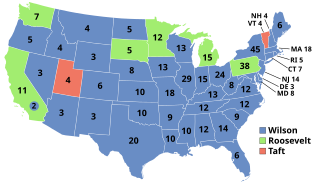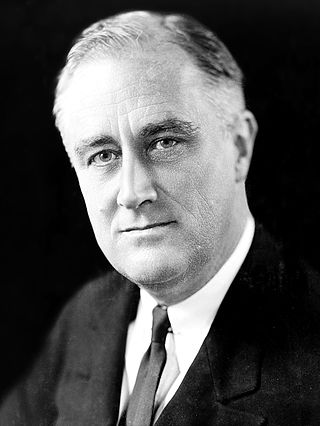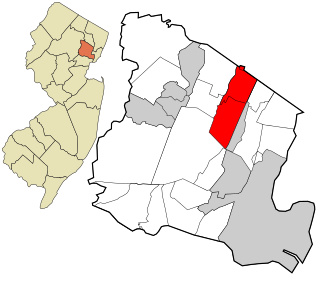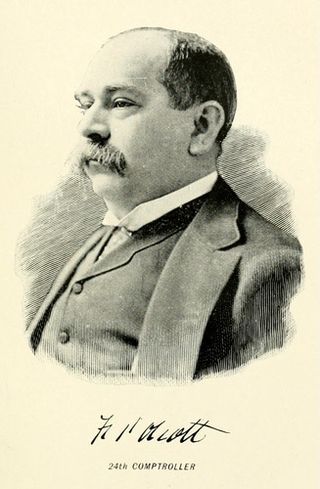Washington Irving Lincoln Adams (February 22, 1865- January 20, 1946) was an American Republican Party politician, banker and soldier.
Contents

Washington Irving Lincoln Adams (February 22, 1865- January 20, 1946) was an American Republican Party politician, banker and soldier.

Washington I. L. Adams was a direct descendant of Henry Adams, who settled in Braintree, Massachusetts in 1636, and also of Presidents John Adams and John Quincy Adams.
He was a founder and President of the Montclair Trust Company, the Murray Hill Trust Company, and the West Side Bank of New York. He served as President of Styles & Cash, a New York City printing and stationery firm.
In 1912, Adams was the Republican nominee for the U.S. House of Representatives in New Jersey's 10th congressional district. The incumbent, Democrat Edward W. Townsend, had been elected to Congress in the 1910 Democratic landslide that helped Woodrow Wilson win election as Governor of New Jersey. Townsend was re-elected in 1912 (with Wilson running for President) with 10,854 votes, with former Assemblyman William F. Morgan (running as a Progressive with Theodore Roosevelt) receiving 7,847 votes. Adams (on a ticket with William Howard Taft finished third with 7,111 votes. [1]
During World War I, Adams, at the age of 52, was commissioned a Major in the U.S. Army and was the Officer In Charge of Finance for the Eastern Division, Quartermaster Corps. [2]
Adams was a member of the Electoral College in 1916, voting for Charles Evans Hughes, and was an unsuccessful candidate for Elector in 1932. In 1932, Adams was elected Town Commissioner in Montclair, New Jersey and served until 1936.
Adams was a member of the Sons of the American Revolution and served as its President General from 1922 until 1923. [3]

The 1912 United States presidential election was the 32nd quadrennial presidential election, held on Tuesday, November 5, 1912. Democratic Governor Woodrow Wilson unseated incumbent Republican President William Howard Taft and defeated former President Theodore Roosevelt, who ran under the banner of the new Progressive or "Bull Moose" Party. This is the most recent, and the only post-Civil War presidential election in which the second-place candidate was neither a Democrat nor a Republican. This is the most recent election to date in which four candidates received over five percent of the vote.

The 1916 United States presidential election was the 33rd quadrennial presidential election, held on Tuesday, November 7, 1916. Incumbent Democratic President Woodrow Wilson narrowly defeated former Associate Justice of the Supreme Court Charles Evans Hughes, the Republican candidate.

The 1932 United States presidential election was the 37th quadrennial presidential election, held on Tuesday, November 8, 1932. The election took place against the backdrop of the Great Depression. The incumbent Republican President Herbert Hoover was defeated in a landslide by Democrat Franklin D. Roosevelt, the Governor of New York and the vice presidential nominee of the 1920 presidential election. Roosevelt was the first Democrat in 80 years to simultaneously win an outright majority of the electoral college and popular vote, a feat last accomplished by Franklin Pierce in 1852, as well as the first Democrat in 50 years to win a majority of the popular vote, which was last done by Samuel J. Tilden in 1876. Hoover was the last incumbent president to lose an election to another term until Gerald Ford lost 44 years later. The election marked the effective end of the Fourth Party System, which had been dominated by Republicans. It was the first time since 1916 that a Democrat was elected president.

Charles Gates Dawes was an American banker, general, diplomat, composer, and Republican politician who was the 30th vice president of the United States from 1925 to 1929 under Calvin Coolidge. He was a co-recipient of the Nobel Peace Prize in 1925 for his work on the Dawes Plan for World War I reparations.

Montclair is a township in Essex County in the U.S. state of New Jersey. Situated on the cliffs of the Watchung Mountains, Montclair is a wealthy and diverse commuter town and suburb of New York City within the New York metropolitan area. As of the 2020 U.S. census, the township's population was 40,921, reflecting an increase of 3,234 (+8.5%) from the 37,687 counted in the 2010 Census. As of 2010, it was the 60th-most-populous municipality in New Jersey.

Hiram Warren Johnson was an American attorney and politician who served as the 23rd governor of California from 1911 to 1917. Johnson achieved national prominence in the early 20th century. He was elected in 1916 as the United States Senator from California, where he was re-elected to five terms and served until his death in 1945.
The Virginia dynasty is a term sometimes used to describe the fact that four of the first five presidents of the United States were from Virginia. The term sometimes excludes George Washington, who, though a Virginia planter, was closely aligned with the policies of the Federalist Party, and was succeeded by his vice president, John Adams of Massachusetts. The first five presidents were, in order, George Washington, John Adams, Thomas Jefferson, James Madison, and James Monroe.

Robert Winthrop Kean was an American Republican Party politician and member of one of the nation's oldest and longest serving political families.

Henry Otto Wittpenn was an American politician who served as the Mayor of Jersey City, New Jersey from January 1, 1908 to June 16, 1913. He was a member of the New Jersey State Highway Commission and was the president of both the Hoboken Land and Improvement Company and the First National Bank of Hoboken. He was also a director of the First National Bank of Jersey City.

The Progressive Party was a third party in the United States formed in 1912 by former president Theodore Roosevelt after he lost the presidential nomination of the Republican Party to his former protégé rival, incumbent president William Howard Taft. The new party was known for taking advanced positions on progressive reforms and attracting leading national reformers. The party was also ideologically deeply connected with America's indigenous radical-liberal tradition.

Frederic Pepoon Olcott was an American banker and politician.
Walter Gilbert Alexander I was an American physician and Republican Party politician from New Jersey. He was president of the National Medical Association and the first African American to serve in the New Jersey Legislature.
James Harold Wallwork is an American Republican Party politician who served in both houses of the New Jersey Legislature and twice sought the Republican nomination for Governor.

The 1912 United States presidential election in New York took place on November 5, 1912. All contemporary 48 states were part of the 1912 United States presidential election. Voters chose 45 electors to the Electoral College, which selected the president and vice president.
John N. Dennis is an American Republican Party politician and business executive who served in the New Jersey General Assembly from 1968 to 1974, and again from 1976 to 1978.
Betty Wilson is an American Democratic Party politician who served in the New Jersey General Assembly from 1974 to 1976 and later held posts in the administrations of President Jimmy Carter and under three Democratic New Jersey governors.
John William Suling was an American Democratic Party politician who was twice the Democratic nominee for the U.S. House of Representatives in New Jersey's 12th congressional district.

Dallas Selwyn Townsend Sr. was an American Republican Party official who served as the Assistant United States Attorney General during the Eisenhower administration. He was the father of CBS Radio news reporter Dallas Townsend.

The 1912 United States presidential election in Idaho took place on November 5, 1912, as part of the 1912 United States presidential election. State voters chose four representatives, or electors, to the Electoral College, who voted for president and vice president.
This is the electoral history of Thomas Woodrow Wilson, a Democrat, who served as the 28th President of the United States (1913–1921), and earlier as the 34th Governor of New Jersey (1911–1913).